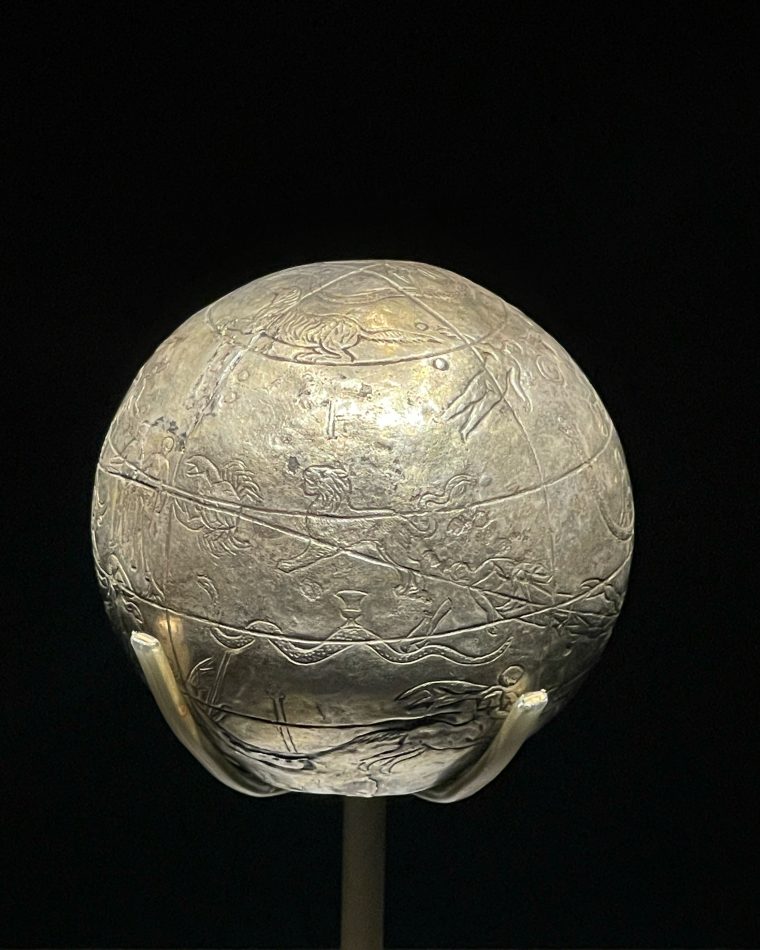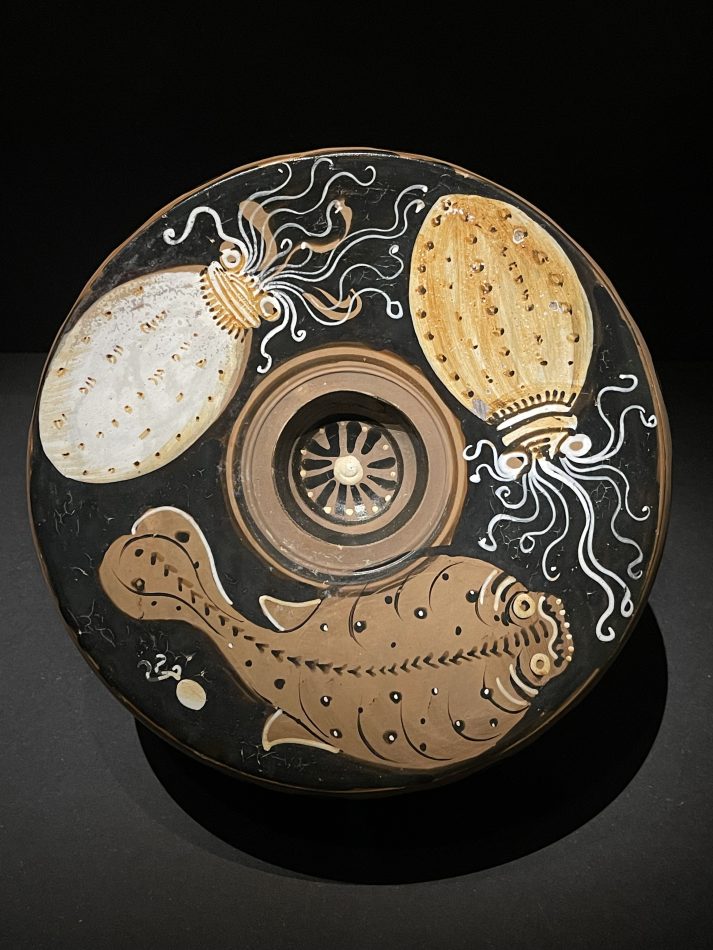Exhibition – Ancient Greeks: Science and Wisdom

Silver celestial globe. One of only 3 surviving Ancient Greek globes, this beautiful object may have been used to help people better understand the night sky. All 48 constellations known to astronomers at the time are represented by mythical figures, to assist in remembering their relative positions. Lent by the Nicolas and Alexis Kugel Collection, Paris Loan no. L2021-171 © Photo by Sandra Alvarez.
If you’re in London and looking for a quick, free, ancient Greek fix then pop into the Science Museum and check out their exhibition: The Ancient Greeks: Science and Wisdom. The exhibition looks at different artifacts and their relation to ancient Greek music, mathematics, philosophy, and astronomy.
The exhibition begins with a look at the nine Muses and the importance of art, music, and science to the ancient Greeks. It moves on to look at several maritime discoveries. This section also contains a display of colourful fish plates that give visitors an idea of the marine life that was present during Aristotle’s lifetime and discusses his classification of animal groups. Some of these pieces were my favourites because the plates have been carefully preserved and have retained their vibrant colors. The exhibition then explores music and astronomy. There is a neat little video demonstrating how science today has been used to replicate the sound of instruments such as the aulos, a popular reed instrument in ancient Greece.
 Fish plates. About 370-300 BC. Made around Aristotle's lifetime, these fish plates decoratively evoke the marine diversity and detail he described. After observing animals feeding and reproducing in their natural environment, and examining their anatomy, Aristotle classified them into groups. ©Photo by Sandra Alvarez
Fish plates. About 370-300 BC. Made around Aristotle's lifetime, these fish plates decoratively evoke the marine diversity and detail he described. After observing animals feeding and reproducing in their natural environment, and examining their anatomy, Aristotle classified them into groups. ©Photo by Sandra Alvarez
Some of the other stand out items featured in this collection are a stunning gold headdress decorated with the goddess Athena that would have been worn by a high status woman, and a rare silver sphere decorated with cosmological designs. The exhibition is small and has some interactive features. A visit should take approximately 30-45 minutes. Tickets are free, and you can purchase them here. Please note: you must book a free ticket to the museum in order to enter the exhibition. To preserve the artifacts, the lighting in the exhibition is rather low. Non-flash photography is permitted, except where indicated. The exhibition runs until June 5, 2022.
Love ancient Greek history? Want to learn more?
Subscribe to Ancient History!
Follow us on Instagram: @ancienthistorymag

